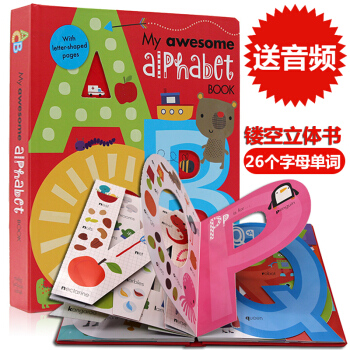![Seven Blind Mice七只瞎老鼠 英文原版 [平装] [4岁及以上]](https://pic.windowsfront.com/19140947/d3779aec-06a7-47c0-937c-ee582dfb312d.jpg)

具体描述
内容简介
Using bold, playful primary colors, Caldecott winner Ed Young creates seven blind mice that will steal the hearts of the very youngest readers. This is a warm and entertaining fable of seven tiny creatures who set out to discover the "Something" by the pond--but who each come back with a different answer. 1993 Caldecott Honor Book. Full color. In this retelling of the Indian fable, seven blind mice discover different parts of an elephant and argue about its appearance.作者简介
Ed Young (www.edyoungart.com) lives in Hastings-on- Hudson, New York.精彩书评
Publishers Weekly In a stunning celebration of color Caldecott medalist Young ( Lon Po Po ) offers a vibrant variation on the fable of the blind men trying to identify an elephant. Seven differently-hued blind mice approach the ``strange Something'' in their midst on successive days and report their findings to the group. A large black square provides the background for each painting, a dramatic contrast to the brilliant images ``felt'' by the sightless rodents. Young's textured, cut-paper illustrations allow readers to visualize just how a floppy ear might be mistaken for a fan (``I felt it move!''); the elephant's curving trunk springs to life as both a jewel-green snake and a glowing yellow spear. The spare text permits greater exploration and enjoyment of the artwork--it may be difficult to read the story straight through without stopping to compare the various images. The ``Mouse Moral'' that concludes the tale--``Knowing in part may make a fine tale, but wisdom comes from seeing the whole''--may seem superfluous to those who prefer the imaginative ``vision'' of the mice. Ages 4-up. (Apr.) Children's Literature In this ancient fable seven blind mice find something mysterious by a pond. One by one, they investigate the "thing" and make their own guesses as to its identity. Only the seventh mouse sees the whole truth and solves the big mystery. This animal fable teaches a great lesson about wisdom and the need to look at the whole instead of getting lost in the parts. Young readers will enjoy the stunning paper-collage illustrations that can also be used to help youngsters explore the concepts of color, days of the week and ordinal numbers. Fewer Reviews Children's Literature In Seven Blind Mice, Ed Young offers a fable from India about understanding something only when you know the whole if it. Seven blind mice encounter an elephant by their pond and one by one they explore the beast to find out what it is. Day by day, each mouse goes forth and comes back with an idea as to what it is. On Monday, the red mouse feels the elephant's sturdy leg and surmises that it is a pillar. On Tuesday, the second mouse, the green one, encounters the elephant's trunk and reports that it is a snake. Similarly, the yellow mouse misidentifies the elephant's tusk as a spear. After six mice have gone, the white mouse runs over the entire elephant and realizes by feeling the entire animal that it is an elephant. In this 1993 Caldecott Honor book, Young incorporates colors of the rainbow, counting, and days of the week as well as the moral that the fable provides. Exquisitely done, Young's cut paper illustrations give life to this age-old tale. The scampering mice transfer well to the screen, B.D. Wong's narration is pitch perfect, and the mice are each endowed with their own singular personalities. An interview with author/illustrator Ed Young rounds out this DVD as he discusses how the concept for this book developed. This DVD is ideal for classroom use and for children's literature enthusiasts. Running time: 7 minutes. Reviewer: Joan Kindig, Ph.D. Children's Literature Young is one of the finest Asian artists in the children's book field. He reveals his understanding of children in Seven Blind Mice, a Caldecott runner-up. He provides visual delight with strong watercolors and imaginative collage. As he recreates the classic tale of the seven blind men, he serves younger children with weaving concepts of colors, numbers and days of the week. The truths of the book and its theme of limited vision, speak best to older children. School Library Journal K-Gr 3-- A real winner, on many levels. The first impression is visual delight. Brilliant colors and varied textures of paper collage are placed in striking contrast against velvety black pages. Bold white lettering imposed on the dark background tells of seven blind mice, seen in seven bright colors. Over the course of a week each investigates, in turn, the strange ``Something'' it encounters. To one it is a pillar, to another a snake, to another a cliff. Finally, on the seventh day, the white mouse, running across the thing and remembering what the others found, concludes that it is an elephant. The tale ends with the moral that wisdom comes from seeing ``the whole.'' Adapting the old fable of the blind men and the elephant by weaving in the days of the week, the mice, and the beautiful shapes of the things they see, Young gives children a clever story, wise words, and a truly exciting visual experience.-- Shirley Wilton, Ocean County College, Toms River, NJ前言/序言
用户评价
《七只瞎老鼠》是一本真正能让孩子们沉浸其中的书,每次读都像是第一次遇见它们一样。我特别喜欢这本书的叙事方式,作者巧妙地将一个简单的故事,通过七只老鼠各自的视角,层层递进地展现出来。一开始,读者和老鼠们一样,只能看到事物的某一个侧面,感到困惑,甚至有些害怕,但随着故事的推进,每一次新的视角加入,都像是在拼凑一幅越来越完整的图画。这种“解谜”的过程,极大地激发了孩子们的观察力和思考能力。他们会跟着老鼠们一起猜测,一起惊叹,直到最后真相大白的那一刻,那种共同的发现感和成就感是无与伦比的。而且,书中关于“看到整体”和“局限性”的隐喻,在不经意间就已经传递给了孩子们,为他们日后的学习和生活打下了非常重要的基础。即使读了很多遍,每次当我看着我的孩子因为理解了故事的深层含义而露出恍然大悟的表情时,我都会觉得这本书的价值远远超过了它本身的定价。它不仅仅是一个睡前故事,更是一个关于智慧、合作和理解的启蒙。
评分说实话,刚开始拿到这本书的时候,我并没有抱太大的期望,毕竟市面上儿童绘本太多了。但是,《七只瞎老鼠》却给了我巨大的惊喜。这本书最打动我的地方在于它的结构设计。它不是那种线性发展的叙事,而是像一个螺旋,每一圈都让故事更加饱满。七只老鼠,每只都只描述了事物的某一个特征,这种“片面性”的描述,初看之下显得有些荒谬,甚至有点滑稽,但正是这种滑稽,让孩子们更容易理解“盲人摸象”的寓意。我的孩子在听的时候,会忍不住发出笑声,他们会主动去猜测“这个老鼠在摸什么呀?”。然后,当下一只老鼠的描述加入时,他们又会更加兴奋,试图将之前的碎片信息连接起来。这种互动式的阅读体验,让孩子们的注意力始终集中在书本上,他们不再是被动地接收信息,而是主动地参与到故事的构建中。而且,故事的结尾,当七只老鼠的描述汇聚在一起,最终揭示了真相时,那种恍然大悟的感觉,对于孩子们来说,是一种非常宝贵的学习经历。
评分《七只瞎老鼠》这本书,不仅仅是一个简单的故事,它更是一种智慧的启迪。我深刻地感受到,作者通过这个看似简单的故事,传递了一种非常深刻的哲学思想。七只老鼠,因为各自的局限性,只能感知事物的某一个侧面,而将整体看作是完全不同的东西。这种“以偏概全”的思考模式,在我们的日常生活中,其实也时常发生。通过这个故事,我的孩子开始懂得,要全面地看待问题,不能仅仅凭借片面的信息就下结论。这不仅仅是关于“盲人摸象”的寓言,更是关于如何去认识世界,如何去与人沟通的深刻道理。每次阅读,我都会引导我的孩子去思考,如果换成是他,他会怎么做?他会如何去发现事物的全貌?这种引导,让这本书的阅读不再是简单的消遣,而是变成了一种思维的训练。我非常赞赏作者的这份巧思,将如此重要的道理,用如此生动有趣的方式呈现给孩子们,让他们在玩乐中学习,在笑声中成长。
评分这本书的插画简直是艺术品!我尤其欣赏作者在色彩运用上的大胆和细腻。每一页的画面都充满了生命力,那些鲜活的老鼠形象,它们的表情,它们在不同情境下的姿态,都刻画得栩栩如生,让人忍不住想触摸。而且,插画不仅仅是用来“看”的,它们更是故事叙述的一部分,很多细节都隐藏在图画中,需要读者仔细去发现。比如,当老鼠们第一次接触那个“奇怪的东西”时,它们眼中的画面和我们从旁观者角度看到的,是完全不同的。作者通过画面的角度切换,让读者也仿佛置身于故事之中,去体验老鼠们那种未知和好奇。我还会引导我的孩子去观察图画中的一些小细节,比如背景里的植物、老鼠们的小屋等等,这些都会让阅读体验更加丰富。每次阅读,我都会发现新的惊喜,仿佛和这本书一起在成长。这是一种非常棒的亲子互动方式,通过共同欣赏和讨论图画,我们之间的交流也变得更加深入和有趣。
评分这本书最让我惊喜的是它的教育意义,它巧妙地将一个深刻的道理融入到了一个生动有趣的故事中。七只老鼠,分别用不同的方式去描述一个未知的事物,它们各自的描述都“正确”,但又都“不完整”,直到最后,当它们将各自的认知结合在一起时,才得出了一个完整的结论。这个过程,对于小孩子来说,是一种非常直观的认知过程的体验。我的孩子在听的时候,会非常投入,他们会跟着老鼠们一起猜测,一起思考。当他们理解了为什么每只老鼠的描述都不同,又为什么最终的结论是正确的,那种成就感是巨大的。这本书不仅仅是一个睡前读物,它更是一个引导孩子理解“整体与部分”关系的绝佳范例。我还会利用这个故事,在生活中给孩子举例,比如,我们一起吃一道菜,每个人品尝到的味道可能不一样,但只有综合起来,才能知道这道菜的真正味道。这本书的价值,远远超出了其字面意义,它教会孩子用更广阔的视野去看待事物,去理解多元的观点,这对于他们的成长至关重要。
评分给娃囤的,书很好,很喜欢,京东发货很快,头天晚上下单,第二天早上就到了,赞,希望以后更多活动~~
评分这次京东活动力度大,实在不知道该买什么了,找个书单撸一遍 都收了,开心。
评分很好很好很好很好很好很好很好很好很好
评分盲人摸象,很好看的书。正版。希望孩子喜欢。
评分原版的颜色要更准确,引进版的橙色老鼠和红色的很难分别出,这本书本意除了最后一页讲的那句,还有一星期每一天,颜色,七种物品,还有形容词的单词。所以买了引进版之后送给了小伙伴,又买了这本原版。
评分不错,经典
评分类似盲人摸像,给孩子买的。
评分这本书真是太棒了,活动价价格很划算,真的很开心!
评分吴敏兰书单里的,挺好的书。
相关图书
本站所有内容均为互联网搜索引擎提供的公开搜索信息,本站不存储任何数据与内容,任何内容与数据均与本站无关,如有需要请联系相关搜索引擎包括但不限于百度,google,bing,sogou 等
© 2025 book.coffeedeals.club All Rights Reserved. 静流书站 版权所有

![Weird But True! 2: Another 301 Outrageous Facts [平装] [6岁及以上] pdf epub mobi 电子书 下载](https://pic.windowsfront.com/19037711/c2a36623-ebc4-4c2f-b6a0-35c4574cc6d6.jpg)
![Weird but True Human Body [平装] [08--11] pdf epub mobi 电子书 下载](https://pic.windowsfront.com/19744712/57b118d8N8b0ea00a.jpg)
![预售 英文原版 Hatchet 手斧男孩 [08--12] [平装] pdf epub mobi 电子书 下载](https://pic.windowsfront.com/1037855889/577253e8N2ac989a6.jpg)


![There Is a Carrot in My Ear and Other Noodle Tales (I Can Read, Level 1) 胡萝卜在我的耳朵里 英文原版 [平装] [5-8岁] pdf epub mobi 电子书 下载](https://pic.windowsfront.com/19004943/550be659N649a9627.jpg)
![The Flat Stanley Collection (Box Set)扁平的斯坦利合集 英文原版 [平装] [6-10岁] pdf epub mobi 电子书 下载](https://pic.windowsfront.com/19009040/550be682Nb5b1bd54.jpg)
![Fancy Nancy's Fashion Parade! Reusable Sticker Book漂亮南希的时尚派对贴纸书 [平装] [4-8岁] pdf epub mobi 电子书 下载](https://pic.windowsfront.com/19046812/550beaa0Nd5c9e7f0.jpg)
![The Bald Bandit[光头大盗] [平装] [6-9岁] pdf epub mobi 电子书 下载](https://pic.windowsfront.com/19016472/554c2869N2cd1ca0f.jpg)
![Tess of the d'Urbervilles 德伯家的苔丝 [平装] [NA--NA] pdf epub mobi 电子书 下载](https://pic.windowsfront.com/19017115/rBEQYVGulOoIAAAAAALlsp2b8DEAACwVQMP9cMAAuXK169.jpg)
![The Wind in the Willows 柳林风声 英文原版 [平装] [6岁及以上] pdf epub mobi 电子书 下载](https://pic.windowsfront.com/19043444/rBEhWVKKyrQIAAAAAA3IZ8mC5GMAAFp3gAD4sEADch_527.jpg)
![Who Is Bill Gates? (Who Was...?) [平装] pdf epub mobi 电子书 下载](https://pic.windowsfront.com/19281415/rBEQWFF7k8gIAAAAAACYAnQzEMYAAFJJACl1_UAAJga563.jpg)
![The Willpower Instinct 自控力英文原版 [平装] pdf epub mobi 电子书 下载](https://pic.windowsfront.com/19388161/rBEhVlJblm8IAAAAAAA_VNY-fQAAAEJ6AL2zBkAAD9s864.jpg)
![Who Was Charles Darwin? 达尔文是谁呢? 英文原版 [平装] [7岁及以上] pdf epub mobi 电子书 下载](https://pic.windowsfront.com/19043597/e5b8c6f1-9820-4609-bf10-f7edf57f8617.jpg)
![Who Was Isaac Newton? 英文原版 [平装] [08--11] pdf epub mobi 电子书 下载](https://pic.windowsfront.com/19530994/55f12949Nae8a923d.jpg)
![National Geographic Readers: Follow Me Animal P 英文原版 [平装] [03--05] pdf epub mobi 电子书 下载](https://pic.windowsfront.com/19685631/57844cf4N34ecdb6e.jpg)

![You Can Be My Friend [平装] [3岁及以上] pdf epub mobi 电子书 下载](https://pic.windowsfront.com/19138522/6b7e80ff-50f2-431a-b877-88ed9c3503f1.jpg)
![Now I Know My Alphabet Learning Mats, Grades PreK-1 英文原版 [平装] [4-6 岁] [现在我知道系列:我的字母学习册] pdf epub mobi 电子书 下载](https://pic.windowsfront.com/19280123/rBEQWVFnoZ4IAAAAAAG-cM666SYAAD91gCDuC0AAb6I403.jpg)
![Now I Know My Sight Words Learning Mats, Grades K-2 英文原版 [平装] [5-7岁] [现在我知道系列:英语常见词] pdf epub mobi 电子书 下载](https://pic.windowsfront.com/19280127/rBEQWFFnoYoIAAAAAAGawX1-fbYAAD91gCYvKgAAZrZ632.jpg)